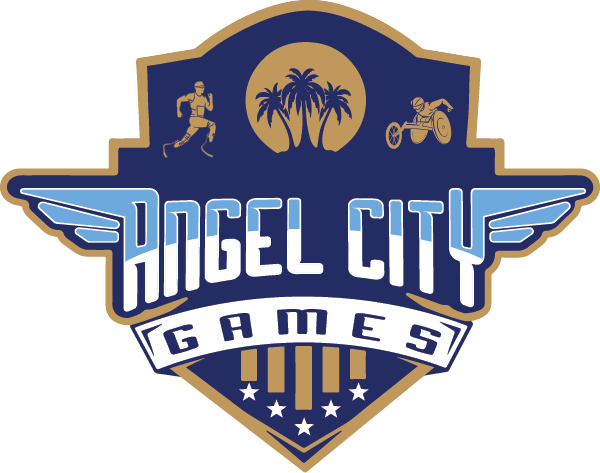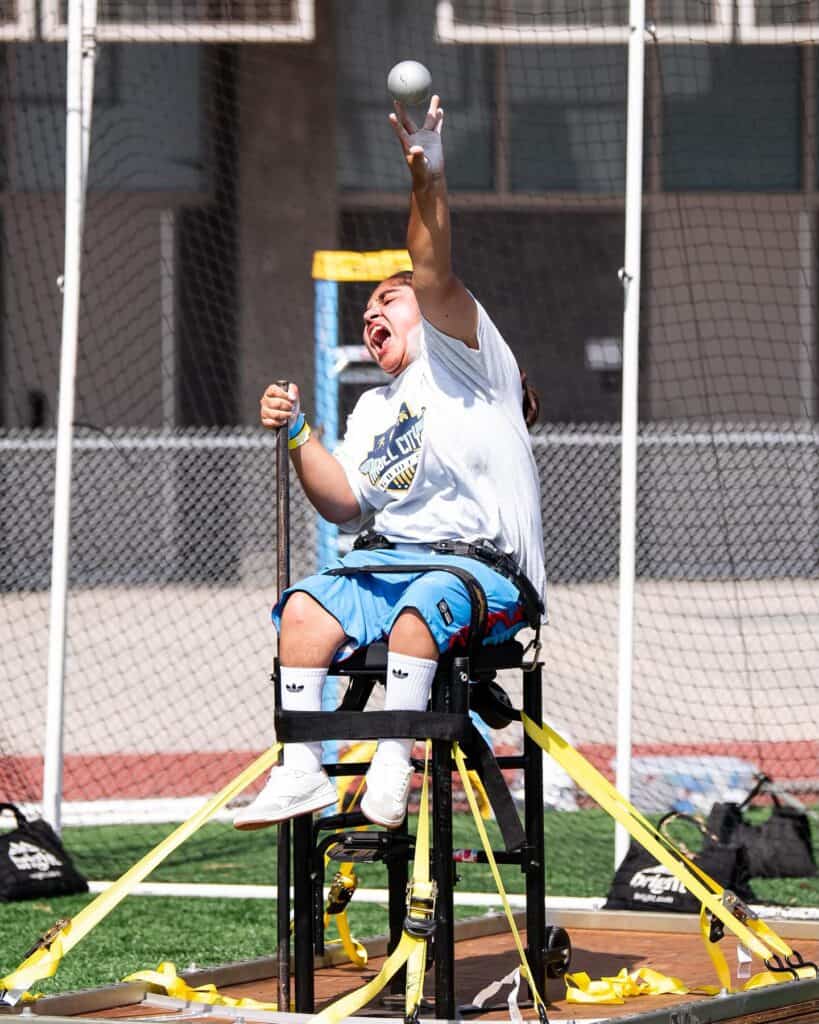Click each sport for a description of what it is and how the sport is played!
Para archery is the discipline for athletes classified with a physical or visual impairment.
The rules for targets, competition format and matchplay are the same as for the target archery and indoor archery disciplines.
In addition to the recurve and compound categories, para archery also has a W1 category for athletes with a severe impairment and a visually impaired category.
Para archers often use assistive devices, such as custom draw or release aids, mouth tabs or wheelchairs, to level the playing field. Classified athletes may also compete with able-bodied athletes in target archery events using their assistive devices.
Link for more information: https://www.worldarchery.sport/sport/disciplines/para-archery
The goal of judo is to either gain more points than the rival by skillful attacks or score the “ippon” by throwing the opponent with their back on the ground, immobilizing them or forcing a submission.
On the Paralympic level, only athletes with vision impairment are eligible to compete, with all the sight classes (B1, B2 and B3) competing together and divided according to the judokas’ weight.
Click here to learn more about Judo!
Blind soccer teams are made up of four outfield players and one goalkeeper.
On the Paralympic level, outfield players must be classified as completely blind (B1 category), which means they have very low visual acuity and/or no light perception, whilst the goalkeeper must be sighted or partially sighted (B2 or B3 category).
To ensure fair competition, all outfield players must wear eyeshades. Teams can also have off-field guides to assist them.
The ball makes a noise due to a sound system located inside that helps players orientate themselves. As a result, spectators must remain silent whilst watching the game until a goal is scored.
Click here to learn more about Blind Soccer!
Boccia is a game of strategy and accuracy that was originally designed to be played by people with cerebral palsy. Now, the sport includes athletes with impairments that affect motor skills.
The sport is played on a flat, smooth surface, where players must throw or roll coloured balls as close as possible to a white target ball, known as the “jack.” The player, pair or team with the most balls near the jack is the winner.
The individual and pair matches consist of four ends, while team matches have six ends. After each end, the athlete, pair or team with the ball closest to the jack receive one point, and an additional point for every ball that is closer to the jack than their opponent’s.
Each athlete, pair or team “throws” six balls per end.
Click here to learn more about boccia!
ACS is proud to partner with the Abilities Recovery Center to offer fitness for athletes with all ability levels! The Abilities Recovery Center, in Los Angeles California, offers specialized fitness programs combined with cutting edge equipment that allows our clients access to the essential standing exercises, and to safely learn how to walk again.
Click here to learn about the Abilities Recovery Center!
The object of goalball is to throw a ball past the opponents and into their net to score points. Players stay on their hands and knees to defend their net and score against their opponents. Teams are made up of six players, with three members playing at any one time.
Players must wear opaque eyeshades at all times ensuring fair competition. On the Paralympic level, athletes must be legally blind, meaning they have less than 10 per cent vision, and are classified as a B3, a B2, or a B1 – totally blind.
Click here to learn more about Goalball!
Paralympic rowing is an open water event, but for the 2021 Angel City Games presented by The Hartford we will train on stationary ergs! Come learn with established programs such as RowLA and meet local 2x Paralympian Laura Goodkind!
Click here to learn more about Rowing!
Powerlifting is one of the Paralympic Movement’s fastest growing sports in terms of participants and is now practiced in nearly 100 countries.
The sport represents the ultimate test of upper body strength with athletes competing in the bench press discipline.
Competitors must lower the bar to their chest, hold it motionless on the chest and then press it upwards to arms-length with locked elbows. Athletes are given three attempts and the winner is the athlete who lifts the highest number of kilograms.
Click here to learn more about Powerlifting!
Sitting volleyball has many similarities to its stand-up version, but with a few modifications. Teams in the stand-up version are separated by a raised net, sitting volleyball is played from a lower net. The court dimensions in sitting volleyball are also smaller.
The main difference between the two versions is that sitting volleyball, as its name implies, is played from seated positions. At all times, the athlete’s pelvis must be in contact with the ground, and service blocks and attacks are allowed.
Click here to learn more about sitting volleyball!
Throws are one component of para-athletics which is the biggest sport within Today, this sport is played by athletes with a wide range of impairments, who are classified into 11 classes based on their physical and intellectual impairments for Paralympic competitions.
This age-old sport has more than 40 million competitive players in over 100 countries worldwide.
A match is played over the best of five sets, with each set won by the first player to reach 11 points with a two-point margin. Para table tennis follows the exact same rules as its Olympic counterpart, with slight modifications regarding the service rules for players competing in wheelchairs.
A let is called if the ball returns in the direction of the net after bouncing on the receiver’s court or leaves the receiver’s court by either of its sidelines.
Click here to learn more about table tennis!
Athletics events have been a part of the Paralympic program since the first Paralympic Games in Rome, Italy, in 1960 and is the biggest sport within the Paralympic Movement in terms of the number of participating athletes and countries. Events include track, throwing, and jumping.
Paralympic track and field competition is open to male and female athletes with physical disabilities such as dwarfism, amputation/limb loss, blindness/visual impairment, spinal cord injury/wheelchair-users and cerebral palsy/brain injury/stroke.
Click here to learn more about track and field!
As the name suggests, wheelchair basketball is an adaptation of non-disabled basketball. The object of the game is to score the most points in the opposing team’s basket. The team with the most points by the time the clock expires wins.
Key Differences:
Dribbling: A wheelchair basketball player takes one or two pushes while the ball is either resting on his or her lap or held in his or her hand, followed by dribbling the ball, and this sequence may be repeated as often as the player wishes
Travel violation: Called when player in possession pushes more than twice without dribbling
Fouls: An infraction of the rules concerning illegal personal contact with an opponent – the wheelchair is considered a part of the player.
Click here to learn more about wheelchair basketball!
Wheelchairs are fixed in position in a frame on the piste and fencers must remain with at least one half of their bottom on the seat at all times.
To ensure the two fencers can reach each other their distance has to be measured and the frame adjusted as required. Once the wheelchair is fixed into the frame, the distance is measured with one fencer extending their fencing arm with their weapon attached and the other fencer bending their arm. For epee the distance is for the weapon to touch the end of the elbow of their opponent. For foil and sabre the distance is measured at the inside bend of the elbow.
Men and women compete in their choice of the sport’s three weapons; foil, epee and sabre. Fencers fight to five points in the early rounds (Poules). In the following knockout stage (Direct Elimination) they fight up to fifteen points.
Wheelchair football was created in the early 2000s but recently has revived as one of the most exciting and fast paced adaptive sports around! In fact, our Los Angeles Rams Wheelchair Football Team just won the championship of the inaugural USAWFL season!
Click here to learn more about wheelchair football!
Today, wheelchair tennis is one of the fastest growing wheelchair sports in the world and fits seamlessly with the non-disabled game. There are no modifications to the size of the court, rackets or tennis balls.
The main differences are the specially designed wheelchairs and the ‘two-bounce rule,’ whereby the ball can bounce twice before being hit.
Click here to learn more about wheelchair tennis!


